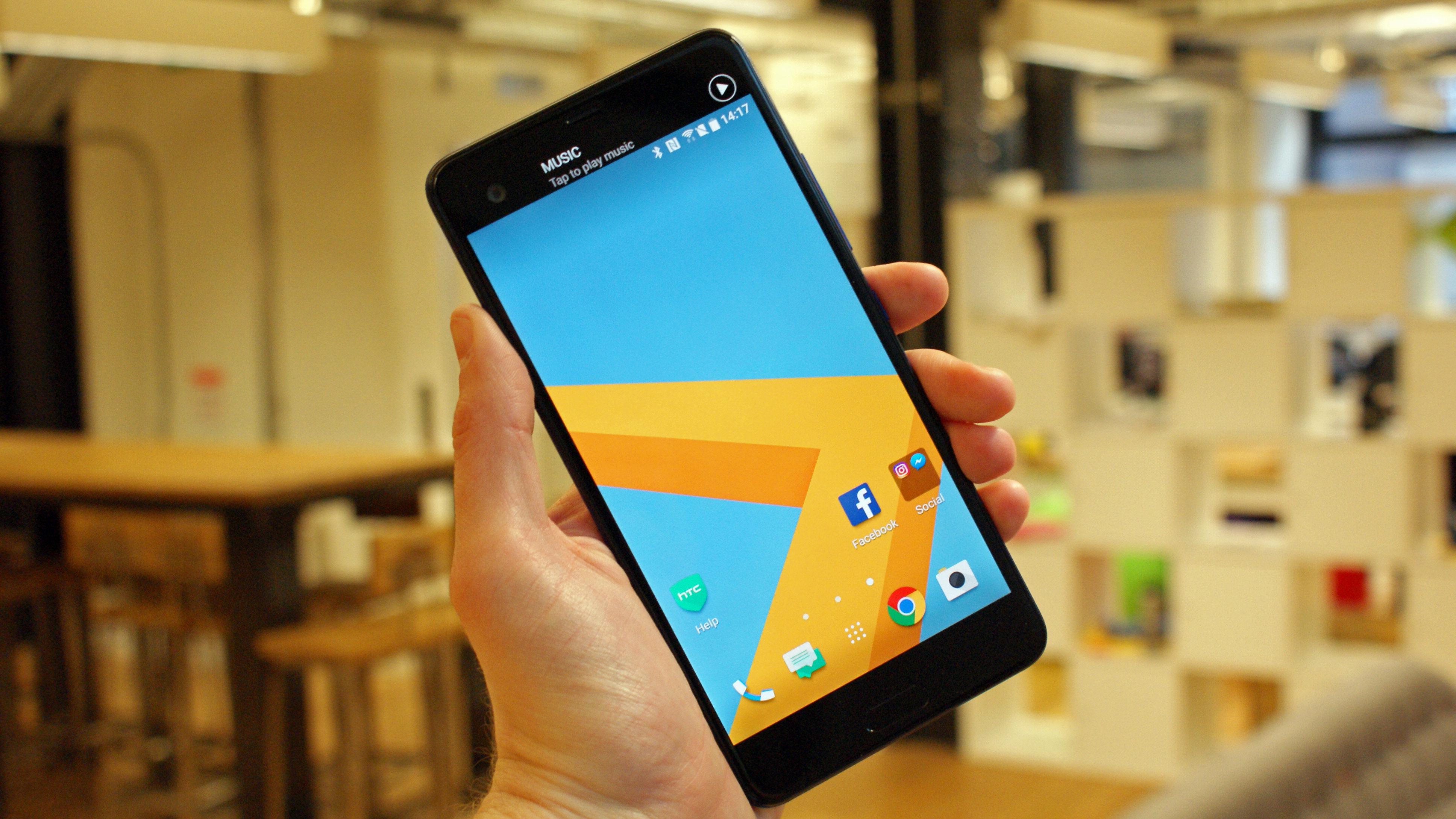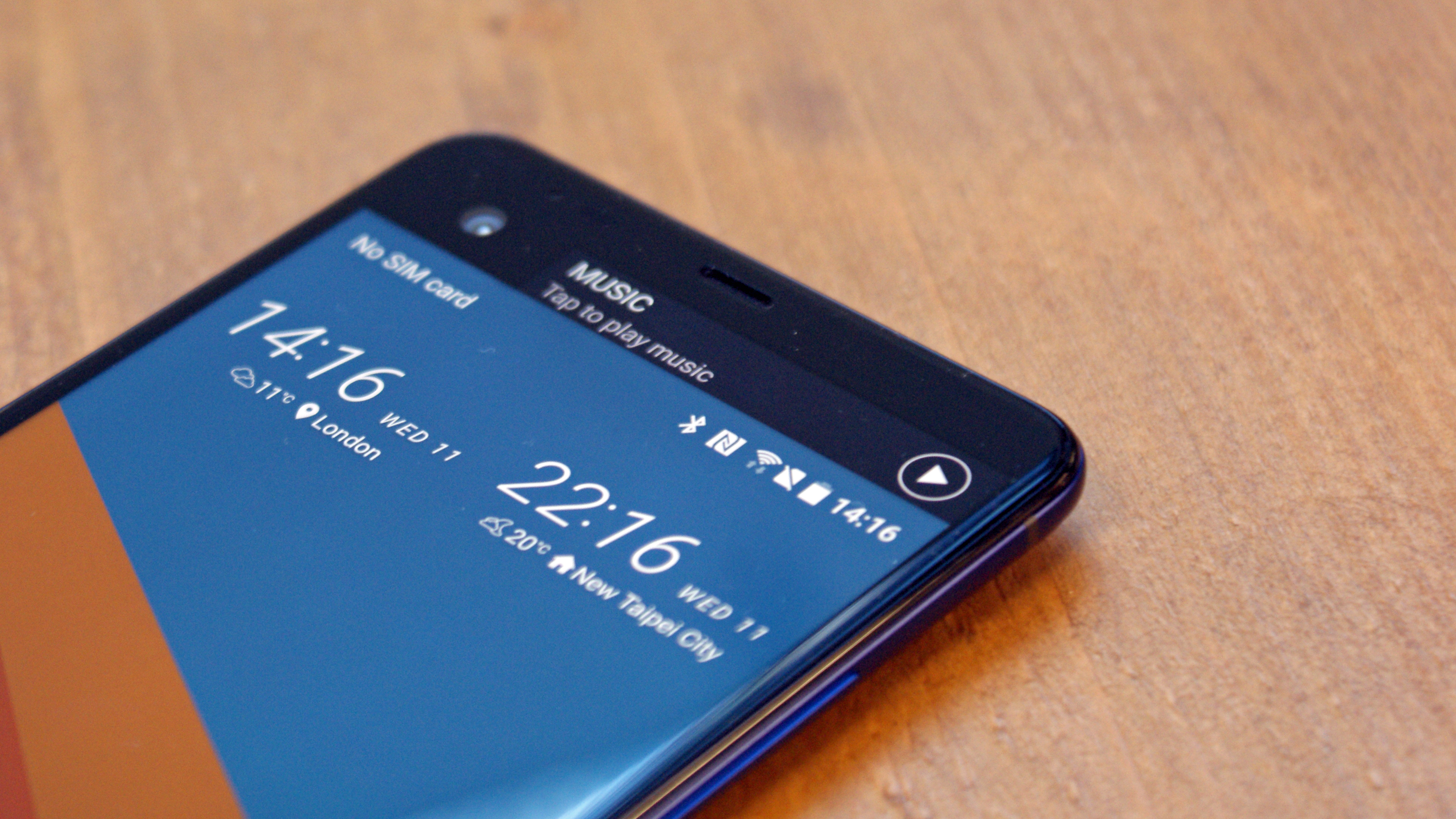HTC U Ultra and U Play phones debut with new AI companion
HTC reckons smartphones just aren't smart enough

HTC's cryptic 'U' teasing of the last few weeks has borne fruit in the shape of two new handsets: the HTC U Ultra and the HTC U Play.
These new phones feature a new glass design, but also come with a new artificial intelligence (AI) companion.
The U Ultra is the most impressive of the two, coming with a Qualcomm Snapdragon 821 chipset, a large QHD 5.7-inch screen, USB-C port (with no headphone jack) and a 3000mAh battery.

On the rear, the 12MP camera from the HTC 10 has been reused and tuned up to focus even faster, and it's also got a neat little secondary display at the top, in a similar manner to the LG V20.
In terms of design it's coming with a new 'Liquid Surface' look, which is basically a molded glass back rolled nicely into a metal frame.

The HTC U Play is a mid-range device that has the same pearlescent glass design, but drops to a Mediatek Helio P10 chipset, 3GB of RAM (rather than 4GB in the larger model), and uses a 16MP sensor without the same lowlight smarts HTC has shoved into the U Ultra.
Both cameras have a 16MP sensor on the front, which combines four pixels into one to intelligently create more impressive low-light selfies, according to HTC.
Sign up for breaking news, reviews, opinion, top tech deals, and more.
A smart phone
HTC's big talking point is that these phones are the most intelligent it's ever launched, with the new HTC Sense Companion (yes, we hate the name too) coming to these handsets atop Android 7 Nougat.
The new AI sidekick will suggest new contacts you might like to set as your favorites, be a diligent monitor of your battery (with suggestions on how to improve it) and even work out which restaurants you'll like nearby.
This is all done by watching what you're doing on the phone, and using that information to craft a more rounded view of who's using it.
The HTC U Ultra is also the most stalker-ish phone out there, with four high-powered microphones constantly listening to what's going on in the hope you'll say a trigger word to light up the phone, and able to hear over greater distances than most other handsets.
The conversation is largely had through Google Now (no Google Assistant here, just yet) but you will be able to have a rudimentary contextual conversation with your phone.
Audio performer
HTC hasn't reinvented itself too much with these new phones, beyond the new design and AI, but that does mean it's still bundling powerful Hi-Res Audio headphones in the box, with USonic buds coming with both phones.

You'll want to hang on to them though, as there's no headphone jack on either of these devices – it's all USB-C here, and there's no audio adaptor in the box.
If that doesn't bother you, then you won't have to wait long to get your hands on either of these phones, with the HTC U Ultra release date set for mid-February for Europe and earlier for Asia, with confirmation still awaited for other territories.
The HTC U Ultra price in the US is $749, at least for pre-orders via the official HTC website. That's slightly cheaper the unlocked iPhone 7 Plus, Samsung Galaxy S7 Edge and Google Pixel XL prices in the States.
We don't have HTC U Ultra UK prices just yet, but expect the U Ultra to sit below high-end flagship territory, and the U Play to be at the higher end of the mid-range tier.
- Will either of these be the best smartphone of 2017?

Gareth has been part of the consumer technology world in a career spanning three decades. He started life as a staff writer on the fledgling TechRadar, and has grew with the site (primarily as phones, tablets and wearables editor) until becoming Global Editor in Chief in 2018. Gareth has written over 4,000 articles for TechRadar, has contributed expert insight to a number of other publications, chaired panels on zeitgeist technologies, presented at the Gadget Show Live as well as representing the brand on TV and radio for multiple channels including Sky, BBC, ITV and Al-Jazeera. Passionate about fitness, he can bore anyone rigid about stress management, sleep tracking, heart rate variance as well as bemoaning something about the latest iPhone, Galaxy or OLED TV.